#reverse logistics services
Explore tagged Tumblr posts
Text
Delivering Excellence: The Impact of Logistics Transportation on Jacksonville Industries
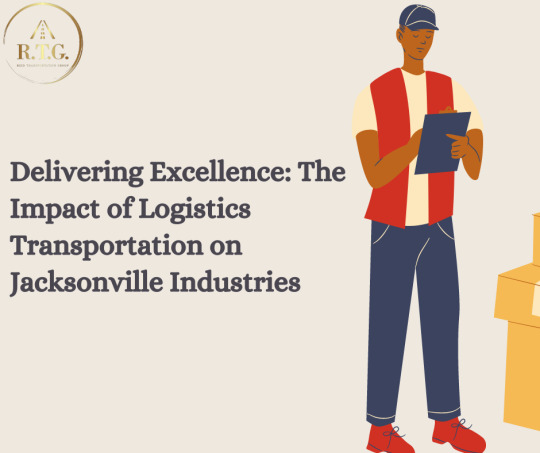
Logistics transportation plays a pivotal role in shaping the landscape of industries in Jacksonville, Florida, by ensuring the efficient movement of goods and services. The city's strategic location, supported by robust transportation infrastructure including ports, railways, and highways, enables businesses to thrive and compete on a regional and global scale. Manufacturing industries benefit from timely deliveries of raw materials and efficient distribution of finished products, while e-commerce businesses rely on logistics for seamless order fulfillment and last-mile deliveries. The agricultural sector leverages logistics networks to reach broader markets and deliver fresh produce. Moreover, the growth of the logistics sector contributes significantly to job creation and economic development in Jacksonville, reinforcing its position as a key logistics hub in the Southeast. As technology advances, logistics and transportation services in Jacksonville, Florida, are undergoing significant transformations.
#logistics transportation services in Jacksonville#logistics#freight brokerage services in jacksonville#transportation#managed transportation services in orlando#reverse logistics services in jacksonville#logistics services in jacksonville#freight brokerage services in tampa#container management services in laredo#truckload services#reverse logistics services#reverse logistics company#intermodal transportation services#third party logistics services
0 notes
Text

Send2Hub is a parcel forwarding service that allows to shop from any UK website and receive parcels in a secure warehouse in the UK. We specialize in parcel storage, consolidation, and worldwide forwarding services. We also offer commercial returns handling services and mail scanning for both individuals and businesses as well as comprehensive inventory handling solution for e-commerce, drop-shippers, SME's. Our mission is to provide tailored, reliable and cost-effective services, ensuring timely delivery and customer satisfaction.
#parcels#parcelforwarding#UKforwarding#e-commerce solutions#freeUKstorage#3pl logistics#3pl warehousing services#reverse logistics
0 notes
Text

Your Trusted Cross-Border Logistics Expert - DahNAY Logistics
Cross-border logistics companies are essential for businesses expanding globally. These specialised firms handle the complexities of international trade, including customs clearance, transportation, warehousing, and supply chain management. DahNAY is a Leading Cross-border Logistics Provider offering end-to-end solutions. With our expertise and global network, we simplify the process, allowing you to focus on growing your business.
Explore our blog: Choosing the Right Freight Forwarder
Explore DahNAY’s Logistics Services: https://dahnay.com/services/
#dahnay#dahnay logistics#cross border logistics#supply chain management#leading freight forwarder#customized logistics service provider#seameless reverse logistics#logistics company in chennai#time critical logistics#sustainable logistics#customs clearance solutions#end to end logistics solutions
0 notes
Text
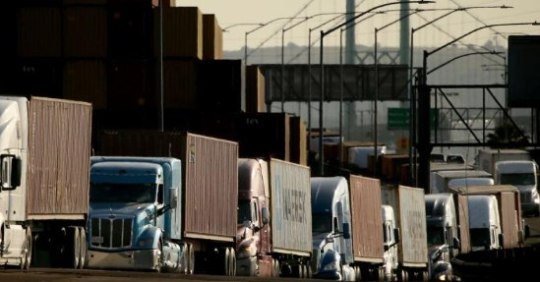
Warehousing and fulfillment services play a crucial role in modern supply chains, providing efficient storage, order processing, and shipping solutions for businesses. These services streamline operations, reduce overhead costs, and enhance customer satisfaction by ensuring timely and accurate deliveries. Embracing Warehousing and fulfillment services solutions can empower businesses to focus on growth and customer engagement.
#air freight delivery services#warehousing and fulfillment services#amazon prep services#reverse logistics solutions
0 notes
Text
Same Day Delivery in Bangalore: Fast and Reliable Service by CriticaLog
Need your packages delivered on the same day in Bangalore? CriticaLog offers fast and reliable same-day delivery services to meet your urgent shipping requirements. Our efficient logistics network, dedicated fleet, and experienced team ensure prompt and secure deliveries within the city. Whether it's important documents, parcels, or e-commerce shipments, trust CriticaLog for seamless same day delivery in Bangalore.
Contact us now to experience the speed and reliability of our services
#same day delivery bangalore#shipping service in india#online shopping next day delivery#reverse logistics in supply chain management#international shipping#express delivery medicine
0 notes
Note
So I have another "what if" prompt that is very out of left field. Jon gets brought back as his 14 year old self in the 8 year old body (same as Rhaegar) only he's not the only version of himself that the got Summerhalled. They managed to grab 19 year old war vet Jon who is transported into the actual conception child Rhea and Daemon would have had. Rhaegal and Ghost come with (he doesn't get an emotional support twin so he gets 2 service pets to compensate). He's the one who stops in and saves the twins and inadvertently helps sell Daemon's fiction that the twins are true born because he is literally an older version of Jon.
This ask predates Restoration AU, I think, which is funny because it's sort of a reverse Restoration AU? Two Jons but in Resonant era, and one of them the same age as Winterfell!Jon in Restoration, while the other is the nineteen-year-old vet version.
I don't think the math quite works out for 19-year-old Jon to be the consummation baby of Daemon and Rhea's marriage unless he's a few years younger in the Dance era, and Daemon wouldn't have abandoned a trueborn son (nor would early marriage Rhea have hidden him). Maybe it works if he's 14, aka born 3 years into Daemon's marriage with Rhea, when she was much more embittered against him, though again we have to handwave that Rhea was willing to hide an actual trueborn son when Jaehaerys himself was still alive!
The logistics of Rhaegal suddenly appearing in the world would certainly be...interesting. Vet!Jon would have to be pretty clever with his explanation there! Once the Volantis shenanigans are known to him, maybe he can claim that he was kidnapped by them as a child and only recently escaped/returned to Westeros.
144 notes
·
View notes
Text
President Donald Trump on Wednesday signed an executive order shutting the de minimis trade loophole, effective May 2. Trump in February abruptly ended the de minimis trade exemption, which allows shipments worth less than $800 to enter the U.S. duty-free. The order overwhelmed U.S. Customs and Border Protection employees and caused the U.S. Postal Service to temporarily halt packages from China and Hong Kong. Within days of its announcement, Trump reversed course and delayed the cancellation of the provision. Wednesday’s announcement, which came alongside a set of sweeping new tariffs, gives customs officials, retailers and logistics companies more time to prepare. Goods that qualify under the de minimis exemption will be subject to a duty of either 30% of their value, or $25 per item. That rate will increase to $50 per item on June 1, the White House said. Use of the de minimis provision has exploded in recent years as shoppers flock to Chinese e-commerce companies Temu and Shein, which offer ultra-low-cost apparel, electronics and other items.
27 notes
·
View notes
Text
Assuming that Arya ends up back at Winterfell at some point—which does not necessarily have to be the case—how will she get there? Here I’m proposing two ideas, based on possible predicted “next steps” for Arya’s character.
1. The Jeyne/Arya Mirror Idea
In the TWOW Theon preview, we see Stannis send Justin Massey on a mission: first to Castle Black to deliver “Arya” to Lord Commander Jon Snow (ostensibly fulfilling his promise to retrieve Jon’s half-sister), then to Eastwatch to depart for Braavos. In Braavos, Justin is to collect the Iron Bank’s loan and use it to hire a reputable sellsword company to return to Westeros with.
We the readers know that Jon is dead, however, and the current situation at the Wall is hard to predict. Without Jon to return “Arya” to, it raises the question of what Justin Massey will do with the girl. The Northern Lords have a vested interest in Arya’s sustained safety, so Justin cannot endanger Jeyne. If Jon is no longer there to receive her, and if the Wall has become embroiled in Night’s Watch/Free Folk conflict, it may not appear safe to leave “Arya” at the Wall after all.
Of course, much of this speculation is solely in service of the sheer fun of this possibility: what if Justin Massey ends up bringing Jeyne Poole to Braavos? If that were the case, then we could get the delightful irony of Arya, with her identity hidden, hearing of “Arya” visiting the city. Even better, we could see Jeyne Poole-impersonating-Arya interact with Arya-impersonating-someone-else.
Another benefit here is that Justin Massey’s return trip to Eastwatch (with a sellsword company) might be one way that Arya catches a return trip back to Westeros—even in disguise, perhaps Arya returns to the North via Eastwatch, to mirror Jeyne’s theoretical trajectory out of the continent.
That arc might look like this, with a focus on how the two girl’s trajectories might be the inverse of one anothers’. Of course, much of this relies on layers of speculation; this is all being proposed for the direct purpose of being able to create a scenario where Jeyne’s journey as Arya is somehow the reverse of Arya’s future journeys as not-Arya.

2. The Arya-Sansa-Catelyn Journey
However, that’s hardly the most direct route from Braavos to Westeros, and it’s certainly possible (and even likely) that Arya’s journey might not be related to Jeyne’s at all, even if Jeyne has taken Arya’s identity for the moment.
Perhaps instead Arya’s journey from Braavos will tie more directly to the storylines of her sister and mother.
If Arya lands at Gulltown, she could potentially cross paths with Alayne Stone on her path through the Vale, which could be interesting. Through Alayne and the Corbrays, we are constantly being reminded of the importance of Gulltown as a port for Westeros, and Lord Corbray’s merchant marriage might have been introduced as a way to tie either Braavos or the Iron Bank to Gulltown specifically through trade or commerce.
Then, assuming Arya needs to return to Winterfell, she will be forced to travel through the Neck… where Lady Stoneheart is. I’m not personally a particular supporter of the idea that Arya will (or should) kill Lady Stoneheart, but in any instance it would be narratively interesting to Arya cross her path.
In fact, this trajectory makes an arc that is both logistically sound and provides a real narrative journey from Arya to Winterfell. On this path, Arya-who-is-not-Arya could cross paths with Sansa-who-is-not-Sansa and then Catelyn-who-is-not-Catelyn, all in one smooth arc home from Braavos, shown here:

Of course, neither of these things could happen. This is just a couple of possibilities, and how they would logistically work.
12 notes
·
View notes
Text
Amity is the absolute world to me, and it's funny cause she doesn't feel sorry at all for being an all-watching, consuming insect monster (I mean, maybe she's sorry for herself, but non-apologetic as a whole). like she has a beef with a friend of mine's vampire character - they run vampire speak easy's and try to move the population around and facilitate underground human-cattle esc blood networks and keep the vamps going to avoid getting noticed by the big dogs like Hellsing.
But Amity's the bitch that keeps getting them busted - and they call her a traitor - she has to live off of the living just like them, so why side with them. And she finds it funny, stupid, stupid vampires to imagine there's some fictional familial network connecting them. This isn't how life works, nor how the world works. SHE'D eat them all alive if not for the fact that their dead flesh is useless to her swarm. Her loyalty is only to hers and her own
Peace was never on the table for Lady Pestilence. She's a corrupter, a rotter, her voice infiltrating and infesting far before you notice how endemic she's become. How many of their men became HER men? Do they want to tally and count? Games like these feed into the Sadism inherent in the Jorōgumo. She's just a little wicked
(ALSO FUN HISTORIC CONTEXT, the word Pestilence started seeing use in Old English and is a borrowed word from Old French, and it essentially translates to 'The morally corrupting/rotting/general moral entropy' because Medieval Europeans viewed the plague as a moral failing (because, for much of human history, morality and disease and faith were allllll interconnected and viewed as one singular thing) )
As a tangent, though, how this impacts Amity and the dynamics she forms with her informants is interesting - especially around the artificial vampire issue. Cause, Amity, as wicked and scrupleless a minx as she is, even with her heart at its coldest, does hold fondness and respect for her informants, and while manipulative, she does want to honour her end of the agreement made with them in exchange for their information. It's not her desire to treat them as tools or disposable, though ultimately, her actions do cross this boundary frequently.
But the reason for this, honestly? Lies in the fact Amity KNOWS an unfortunate truth, a LOT of her informants from these underground clubs and rings aren't there by choice - they're not the rich kid lovers or the Luke and Jan sort.
They're more like Helena. They are people in positions without power who had choices made for them without their consent by people abusing power over them, and currently, they're just as much trapped as the people they have to feed off. And, while Amity leverages their desire to get out for information she can't always gather herself, she doesn't WANT to abandon them to their fate or let their service be returned with betrayal and murder. Think of what that would do for her reputation! (she says, while truthfully caring less about that fact than about the memory in the back of her mind of these people relying on her so rawly, presenting their wounds at her feet and asking 'help me,')
So, when it comes to the matter of 'dealing' with them, Amity leans more on the side of hope and dreams and personally champions ( read as. pushes) Integra and the Round Table to probe further into the chips and learn to reverse them - if only because she wants to see a lot of her informants be able to be unshackled from their ailment (or at least reduced to a human condition to face punishment). Which Integra bawks at the logistics of, but Amity compares it to victims trapped under rubble by a tsunami.
YES, their condition is worsening, and they're losing humanity. Yes, it would be labour intensive to free them to the point some could argue it's a waste of time because 'what if they're too far gone, they'll die eventually anyways, ' but she argues any efforts to save and salvage souls are worthwhile, if only to honour the hope Hellsing gave them.
This being said, Amity KNOWS the likelihood of being able to reverse, or at least disable, the artificial effects is next to nil. After all, how many can boast that they've raised the dead? But Amity's doesn't want to leave that book, or it's potential untracked. But either way, dead or alive, she won't lose sleep. She's served her role*.
(*Amity is entirely ethically on board with putting them down if there's no other choice, and she knows that it's just the hope- if they CAN do something and make them half-artificial-vamp-half-human like Mina, or just fully revert 'em, that's the dream but if not she doesn't think it hurts to try.)
6 notes
·
View notes
Note
tell me about french train headlights
They're all the same! Or at least they were, from the mid-1950s to about the early 1990s. They all look like this:
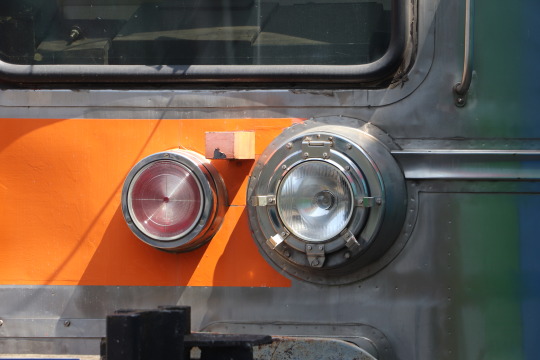
Okay, some context for why I find this interesting. Suppose you see a picture of a train, especially one made in the second half of the 20th century, and you want to know where the train is from. The key trick to telling this at a glance is having a bit of autism, but more specifically, the headlights.
In Europe, all major and many minor countries used to have their own government-owned railroad and their own train-building industry, which would build trains to the specifications of their railroad company. There has always been some exporting going on, but for the most part, the trains you'd find in Germany, France, Switzerland, Austria and so on would be all completely different. This has changed drastically over the past 20ish years.
One thing about this old model is that railroad companies would standardise certain parts within their fleets, especially small parts that need servicing and replacing every now and then. It saves on how many different types of spare parts you need to have.
Headlights are the most notable among these by far: Every train needs to have some of them. All trains have basically the same requirements for their headlights, no matter how fast or slow or whatever they are. Before LEDs, you needed to service the headlights regularly to replace the light bulbs. Also they are glass parts at the front of a fast moving vehicle, they can get damaged, so spare parts logistics are an issue. And most importantly, we as railfans can easily see them. So you get something like this:
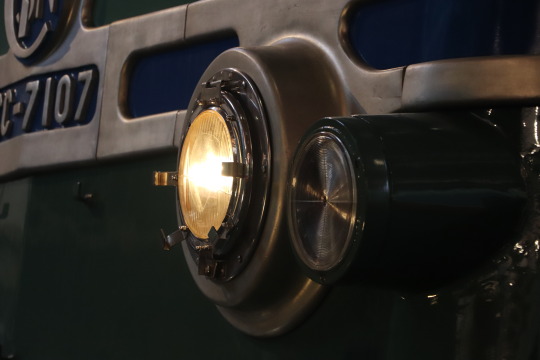
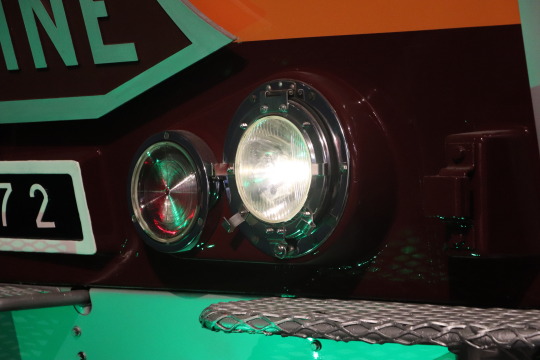
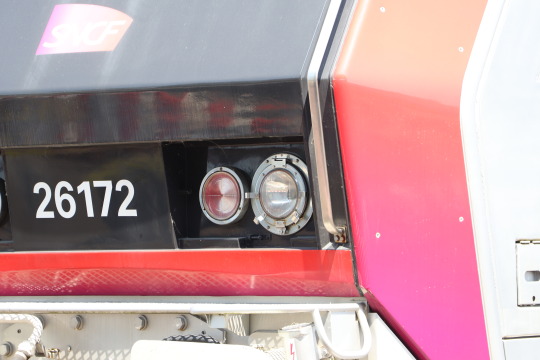
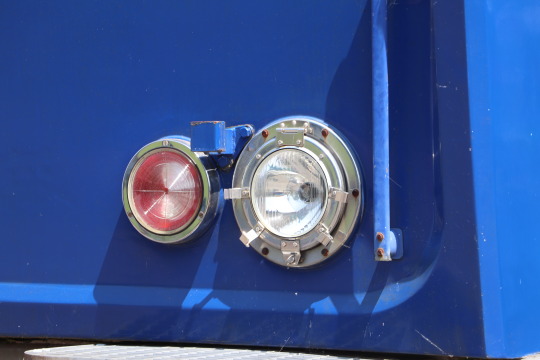
As a result, basically all railroad companies in post-war Europe standardised their head- and taillights for all or most of their trains. And all of them had completely different ideas. Fundamentally, all of them agreed that you need white headlights and red taillights, and since modern trains are easily reversible, you put both of them next to each other.
But do you make the white and red lights the same size (West Germany, Netherlands) or different sizes (Austria, East Germany)? Are they separate things, or do you combine them into one assembly (UK, Switzerland)? Do you make them anything approaching normal sized or gigantic (Poland)? Maybe I'll do an overview post over these later, but I don't have enough pictures in my library right now and I'd have to scour Wikipedia for them later.
The French headlight design shown here is in many ways just one of many, but also interesting in its own right: The actual lenses for red and white are the same size, but the white headlight gets this huge lens assembly that makes it look much more prominent. You can clearly see that different French designers had very different ideas about whether you align the center-lines (most of them), or the bottom of the lens assembly. Why is the headlight lens so big, and what are the metal tabs around the bottom half of the circle? I have no clue. My guess is to put some coloured glass panes in, but I have no idea why you'd need that. Also, note that the red taillight classically has a fresnel lens, that's unique as far as I can tell.
I've taken all these pictures in the Cité du Train, the big central French railroad museum in Mulhouse. (That's why I was posting about traveling to Basel early this weekend. Mulhouse is actually really close to Basel, and going via Switzerland is the most practical—and most scenic—route for me) The oldest locomotive I could find with these headlights was CC-7107:
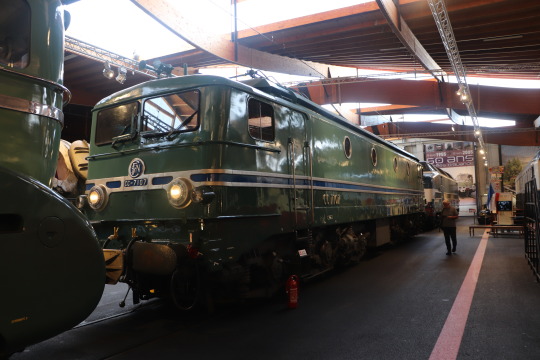
During high speed trails in the early 1950s, this locomotive reached a speed of 326 km/h (203 mph). That made it only second best behind the other locomotive at the trials, BB-9004:
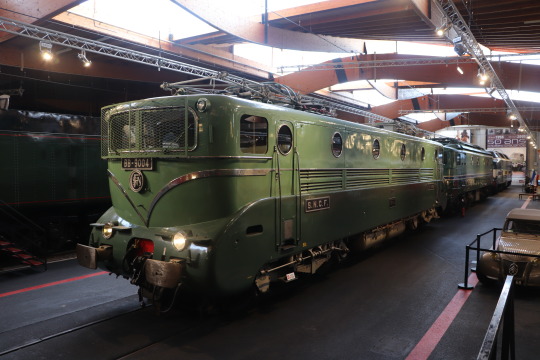
This one reached 331 km/h (206 mph), a world record that would not be beaten for a long time. The difference was nothing to do with technical performance. Instead, both locomotives melted their pantograph, the part on top that touches the overhead line to get power, at around 320 km/h (200 mph). BB-9004 had a second one that it could lift up to continue accelerating, while CC-7107 only had the one. For a long time, SNCF pretended that both locomotives had reached 331 km/h, to protect the reputation of both manufacturers.
What's notable for our purposes is that BB-9004 has different headlights. As far as I can tell, these seem to be an earlier standard design, also found e.g. on the CC-65001 diesel locomotive:
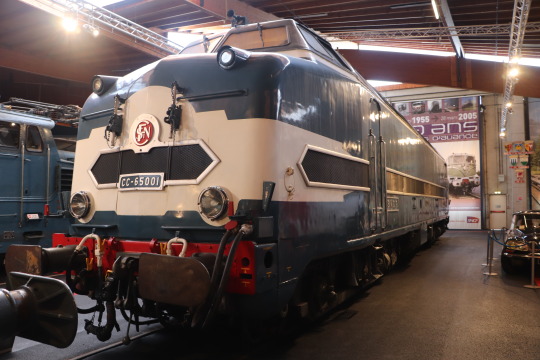
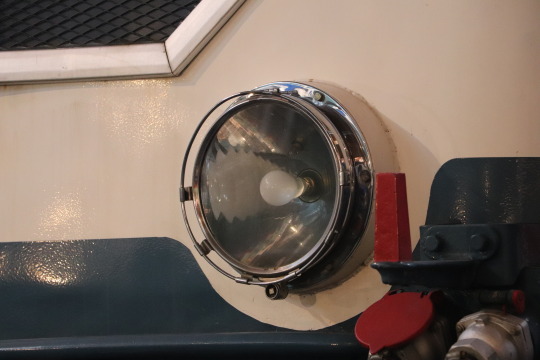
And even on steam locomotives, like this class 141 R:

So CC-7107 lost on the high speed world record, but it was the way of the future when it came to headlights. These headlights then started cropping up everywhere. From the detail pictures I've shown you above, we have e.g. Le Petit Gris (the small grey one, an EMU for suburban services in Paris):
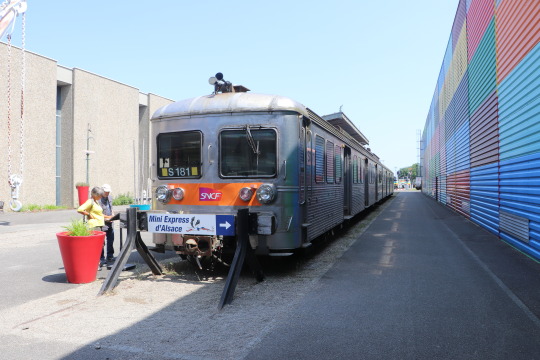
A CC-6500, dressed up with a nameplate for the express train it was hauling. Fun fact: One locomotive of this type (not this one) was used in the US for a while, as Amtrak was trying out new electric locomotives to use. They weren't happy with it and bought a Swedish one instead, mostly because this locomotive's suspension did not work well with the American track quality.

A Z 2200, a diesel railcar for rural lines designed to be cheap first, second and third.
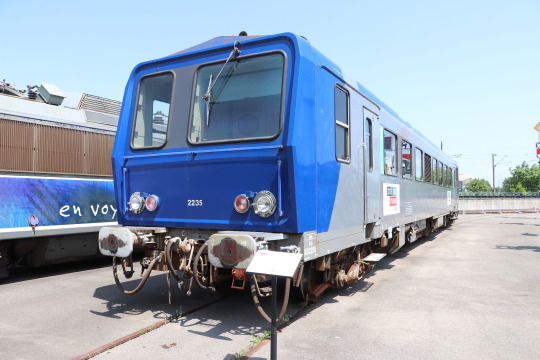
A BB-26000, which feels altogether way to new to be in this museum.

It's from the 1980s, so I guess the first are reaching retirement age. But at the same time: The train I took from Basel to Mulhouse was still pulled by one of these BB-26000.
Other favourites include the BB-25600 with its rare diagonal light arrangement:
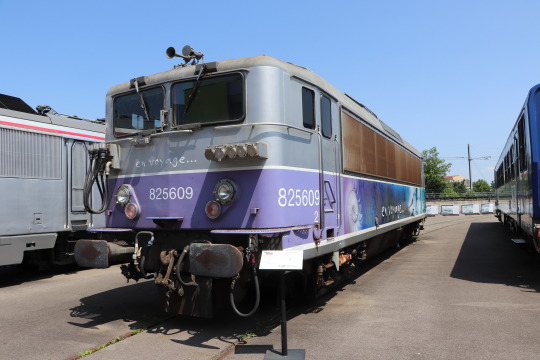
Or the really terribly lit gas turbine train RTG, which puts the headlight on stalks:

Fun fact: Amtrak did end up buying a few these. They didn't use the same white headlights (although they did use the same stalks), but they did use the same fresnel lens red taillights.
And the headlights went all the way up to the top. To the TGV. Only these headlights aren't very aerodynamic, so for their high-speed train, SNCF decided to cover them up.
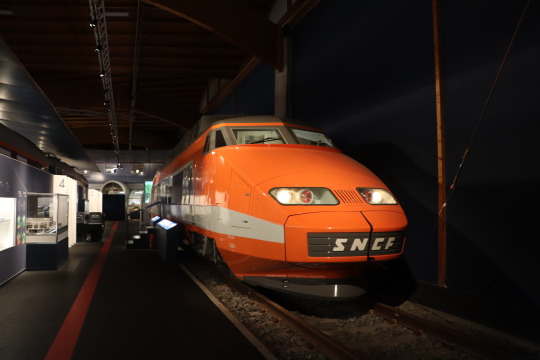
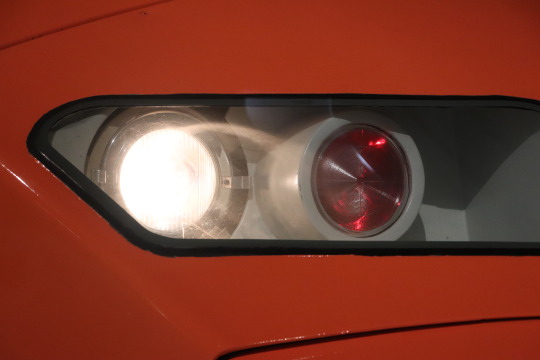
As far as I can tell, SNCF used these headlights in the TGVs up to the Réseau series, including the Eurostar. That meant that they're also found, though behind faded glass, on the TGV Atlantique 325 in the outdoor area. Number 325 is notable because it was involved in another high speed trial, and reached 515.3 km/h (320.3 mph) on May 18th, 1990.
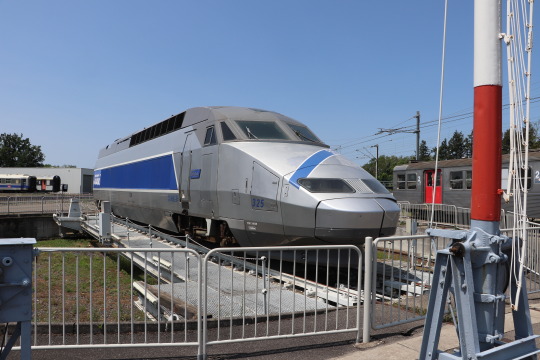


That was a world record, of course; in fact only the French ever exceeded 500 km/h on conventional railroads. So these headlights did get their world record after all. They didn't get to keep it for long, though. In 2007, a newer TGV reached 574.8 km/h (357.2 mph). That one is still in service, though, and it was equipped with newer LED headlights. I think it's highly unlikely that this record will be broken anytime soon, but if anyone does, I wouldn't be surprised if it were the French again, they like that sort of stuff.
Some final odds an ends with the headlights, though: Here's CC-40101, which isn't actually relevant, I just like the way it looks.
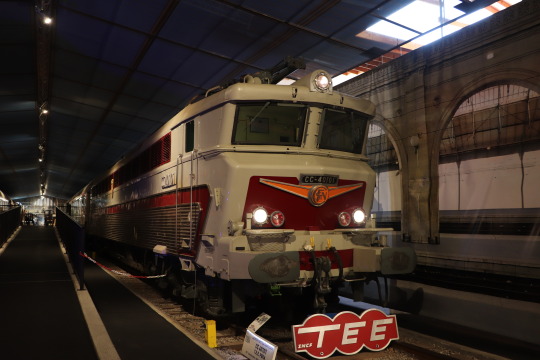
Designed for service in France, Belgium, the Netherlands and Germany, with four different voltages and four different train control systems, and that with mid-1960s technology. It wasn't quite as successful as hoped, and in service it only ever reached Belgium, but still, look at that design. The front is supposed to evoke an athlete, a sprinter about to start, but this type of design has instead become known as "Nez cassé", broken nose.
BB-9291 shows a rare early version without red tail lights at all. Someone thought they were saving money.

This small work train has a free-standing version of the headlight, which shows us how deep it really is. Apparently, the French headlight is actually not that deep, and isn't that a nice summary for this post?
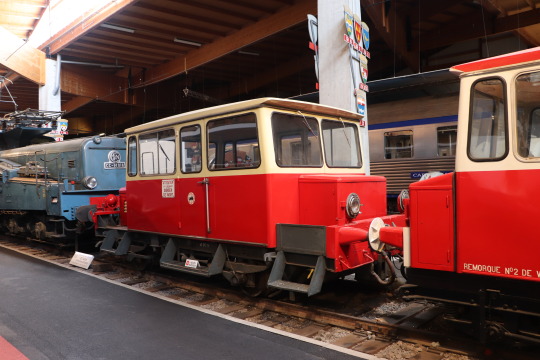
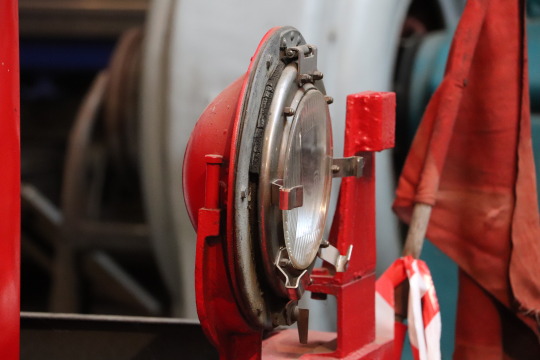
And a personal favourite of mine, I even bought a T-Shirt with it on it, the Z 600:
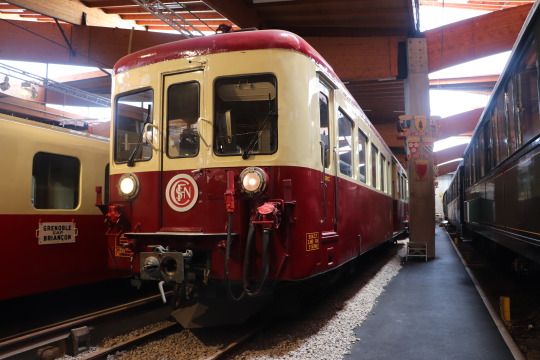
The design, in particular the side windows (recessed instead of flush, no outside visible gasket) says Swiss, the headlight and SNCF logo says French, it's narrow gauge and it has a third rail to provide power. Just all around a weird little train, for the weird little line known as the Mont-Blanc Express from France via Switzerland to the bottom of the Mont-Blanc mountain. The train was built in Switzerland, experts of building small trains for mountains, but for the French part of that rail line, so it got French headlights.
Headlights with exporting is a fun topic in its own right. Do you keep the headlights from the country of origin, or demand your own? You will find both approaches. Both Portugal and the Netherlands bought very similar electric locomotives from France. Portugal has French headlights, the Netherlands insisted on (less interesting) dutch ones.
These days, of course, you will still find these headlights, but they're getting rarer. They stopped being used in new trains around the mid-1990s. What's more, the ones you do find, like on this MI-84 in Paris, probably don't have the fresnel lens taillight anymore. Instead, those were replaced with LEDs.
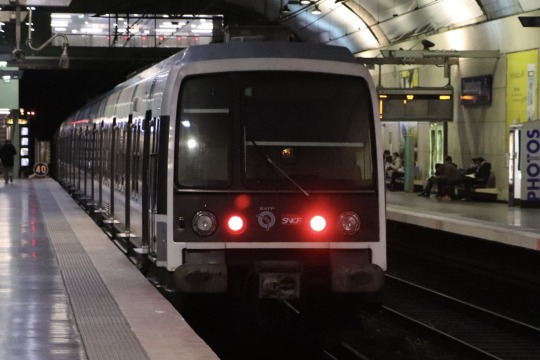
LED lights for railroads make a lot of sense. They last forever and require less power. And since most railroads have standardised their head- and taillights, you just need to design one replacement light for most of France, and then keep building that one until SNCF stops giving you money.
(Since we're showing a picture from Paris, a quick note: These headlights were never used on passenger-carrying trains for the Paris metro. However, some work trains do have them.)
These days, standard headlights are completely gone. LEDs don't need a lot of replacing, and they give you much more freedom to do things like shapes and patterns and designs. Also, we don't have the "one country, one railroad, one rail industry" pattern anymore. Instead now we have multi-national rail conglomerates. Alstom is technically French, but arguably just as much German, ever since they bought Bombardier's rail division, nominally Canadian. Stadler is Swiss, except for the stuff they build in Germany or Poland or Belarus or Hungary or…, and some of their most interesting products right now are built and designed in Spain.
The end result of that is this:

That's a company I saw at a trade fair (Innotrans, Berlin, 2022) that makes LED train headlights, and specifically they make… all of them? Okay, I'm exaggerating, but this is a great picture to drive a European rail fan insane as they try to assign the different headlights to different trains. You get Stuttgart trams, German (and Turkish) high speed trains, lots and lots of Swiss stuff. Nothing specifically French that I could tell, but at least the German high speed train regularly travels to Paris.
The standard headlights, or their LED variants, were still in use for work trains until fairly recently. There are not that many companies that make rail grinders or ballast tampers, and those tend to just use whatever headlight their customer tells them to. But these days they go for shaped LED headlights as well, because they're just better, and because thanks to European standardisation, a headlight approved in one country can (generally) be used in all European countries.
(All pictures © me, feel free to use them under CC-BY-SA 3.0 DE if you want)
56 notes
·
View notes
Text
The Importance of Effective Container Management Services

Effective container management services play a pivotal role in the seamless functioning of global supply chains, contributing significantly to the efficiency and competitiveness of businesses. These services are instrumental in optimizing inventory and space utilization, ensuring that containers are loaded strategically to maximize capacity and minimize the risk of damage. The resulting cost savings are substantial, as efficient container management reduces storage costs, demurrage charges, and other delays-related expenses. Enhanced visibility and real-time tracking capabilities empower businesses with the knowledge to monitor container movements throughout the supply chain, facilitating proactive decision-making and minimizing disruptions. Furthermore, streamlined container operations lead to reduced turnaround times, enabling faster shipping and improved overall supply chain efficiency. Compliance with international regulations, minimizing environmental impact, and mitigating risks through secure handling protocols are additional benefits that underscore the crucial importance of effective container management services in jacksonville, fl today's complex and interconnected global trade landscape.
#container management services in jacksonville#container management services in Laredo#logistics transportation services in Jacksonville#logistics services in Jacksonville#transportation#logistics#logistics transportation services#freight brokerage services#container management services#third party logistics services#reverse logistics services
0 notes
Text
Exploring the Role of 3PL and 4PL Logistics in the Modern Supply Chain
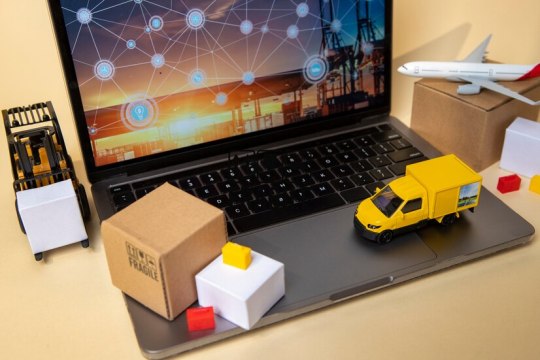
Image by freepik
With the increasing turbulence touching the global scenario, countries and businesses have actually gone one better at ways of making their operations leaner, cheap and efficient. Among some of the simple ways of making even the long-standing functions much more effective is the involvement of an external party in the business activity that would have required a major slice of the overhead. In most cases, it gets into the area of using 3PL and 4PL Logistics for streamlining, if not totally eliminating, logistics functions while advancing their significance.
This logistics-dependent service is significant in enabling supply chain processes of present-day organizations so that they can concentrate on business strategy while the experts take care of the entire facilitation process: transport, warehousing, inventory, and much more.
But what exactly are 3PL and 4PL logistics? Well, and exactly how do they differ?
Let us now consider the particular roles of both in the context of today's supply chain and discuss how such services can be availed of by businesses.
What is 3PL Logistics?
Third-party logistics (3PL) refers outsourcing of logistics functions by a company to a different specialized service provider, usually a 3PL provider, which takes care of the supply chain, including some of the following key processes: transportation, warehousing, inventory management, packaging, and distribution. In other words, the 3 PL logistics companies do the actual operational work of transporting goods from point A to point B, leaving businesses with more time for their core activities.
What services Offered by 3PL Providers:
Transportation Management: The logistics 3PL companies ship or deliver products from one place to another through varied modes of transportation, namely road, rail, and sea. In addition, customers have the option to choose the cost-effective carriers and handle their shipping processes.
Warehousing and Storage: Most 3PL businesses carry out warehousing services, which include placing goods in warehouses that optimize their distribution with good strategic positioning. Another common feature of such warehouses is that they are usually fitted with inventory management systems which help the companies track their goods in real-time.
Inventory and Order Management: 3PL providers can manage inventories and the orders within them, ensuring that products are stored correctly for when they are needed, and that orders will be accurate when they are filled.
Packaging and Labelling: Packaging custom solutions for any 3PL logistics service would also include full-scale packaging, as well as cost-effective labels and barcodes to warrant proper regulation compliance.
Returns Management: Many of the reverse logistics processes - including inspection, refurbishment, and restocking of returned goods - are performed by 3PL companies.
Benefits of 3PL Logistics:
Cost savings: If companies outsource logistics functions to 3PL, they don't have to invest in warehouses, fleets of transports, or technologies. They can put the money into other areas of the business.
Scalability and Flexibility: 3PL provider easily adapted to orders volume, providing businesses with flexibility in their during peak seasons, 3PL providers could scale according to their demand.supply chain. In the event more warehouse spaces or more trucks are required
Knowledge and Expertise: 3PL providers have in-depth knowledge and experience in logistics management. Their capabilities will be beneficial to all companies by taking advantage of best practices in supply chain management and by avoiding costly mistakes.
Reach: Many 3PLs establish global networks that allow businesses to ship internationally without worrying about complex logistics.
What is 4PL Logistics?
Fourth-party logistics (4PL) is regarded as an advance upon the 3PL continuum in logistics management. A typical role for the 4PL provider is to consolidate into one place, coming through the entire supply chain process. It handles all flows of goods, information, and services from first to last-end in a more strategic and holistic approach than a 3PL provider.
4PL Supplier Core End Services:
Integration within the Supply Chain: 4PL providers integrate and coordinate all logistics functions through the use of many 3PL providers and other entities in the supply chain by establishing standardized ways of smooth communication and overall collaboration throughout the whole process.
The Strategic Planning of the Supply Chain: 4PL providers take a pretty macro perspective of supply chains and strategize on maximizing overall efficiency, reducing costs, and increasing performance. They look more at the long-term aspect of the supply chain than at day-to-day logistics operational activities.
From start to finish, 4PL logistics providers will run the entire supply chain process, including procurement and transport, as well as storage, inventory control, and distribution of products. It thus ensures that every step in that supply chain works efficiently and according to the company's objectives.
Technology Integration: 4PL providers not only carry forward advanced technology solutions, for instance, supply chain management software, but analytics tools that provide real-time visibility and data-driven insights into the supply chain. It helps businesses make informed decisions on a more reliable basis and lets them stay ahead of the next giving disruptions.
4PL is providing vendor management services under vendor management: This is the best advantage that gives 4PL clients the benefit of taking responsibility for managing relationships with multiple vendors and service providers while ensuring total compliance with contract fulfillment and performance standards.
Benefits of 4PL Logistics:
Seeing that the supplier operates the other connected logistics businesses, 4PLs follow a holistic approach toward supply chain management: assuring that all logistics functions would be done to have no inefficiencies.
Visibility and control:4PL heads up the entire supply chain from raw material to finished product delivery into the warehousing facilities of retailers. This one makes businesses being stonewalled against having an inside view of their logistics operations. Thus, better monitoring and decision-making as well as the means for controlling the full cycle could be made accomplished.
Focus on Core Business: Outsourcing the strategic management of the supply chain to a 4PL provider allows businesses to focus on what they do best: manufacturing, sales, or customer service.
Innovation and Continuous Improvement: Difficult 4PL solutions with continuous process improvements in supply chain management would assure competitive advantages for businesses and the ability to adapt to changing conditions in the market.
Differences Between 3PL and 4PL Logistics
Both 3PL and 4PL outsourcing offer logistics functions. However, the significant difference is in the scope and the extent of involvement.
Focus: 3PL focuses narrowly on executing a logistics function related to transportation, warehousing, and inventory management, while 4PL dramatically extends the role into a far more strategic oversight of the entire supply chain management end-to-end.
Integration: 3PLs usually operate independently, whereas a 4PL integrates and manages a group of 3PLs, and possibly other vendors, overseeing all logistics activities for an organization.
Technology and Data: 4PL providers usually have sophisticated technologies and data analytics to oversee and optimize the supply chain, whereas 3PL providers do not necessarily have the same degree of technological integration.
Customization: Usually a more tailor-made solution based on the client's unique needs; typically includes standardized services that businesses can choose from.
Which Option is Right for Your Business?
The choice of a logistics solution, either 3PL and 4PL, depends upon the size of your organization, the complexity of the supply chain, and the logistics requirements. For example, if you want certain hands-on aspects of warehousing and transportation in the supply chain, a 3PL provider would make the best fit for your company. A 4PL provider serves a different purpose - to build an integrated solution for businesses requiring one to manage and optimize the whole supply chain.
Here are some considerations that you may take in the decision:
Complexity of the Supply Chain: If the supply chain has involvement from multiple vendors or partners, then integrated and strategic-reach of 4PL will most likely serve you best.
Level of Control: If you want higher levels of control over individual logistics functions, you may find 3PL logistics better suited as it offers more room for managing certain areas within the supply chain.
Growth and Scalability: The greater complexity associated with an expanded business may likely make 4PL a better solution than 3PL logistics in an ever more intricate web of managing logistics. But while still relatively small, a 3PL provider will be that flexible and cost-efficient solution that you need to scale up.
The Future of 3PL and 4PL Logistics
As the global supply chain continues to evolve, both 3PL and 4PL logistics providers are adapting to new technologies, market demands, and environmental considerations. Innovations in automation, artificial intelligence (AI), and data analytics are transforming how logistics services are provided. The future of logistics will likely see even greater collaboration between 3PL and 4PL providers, enabling businesses to take advantage of cutting-edge solutions and improve their overall supply chain performance.
Ultimately, whether you choose 3PL or 4PL logistics, the right provider can help you streamline your operations, reduce costs, and improve efficiency, positioning your business for success in the modern supply chain.
2 notes
·
View notes
Text

E-Commerce Logistics Service | International Freight Forwarder - DahNay Logistics
Effortlessly broaden your global e-commerce footprint using our specialized Ecommerce Logistics Services. We grasp the intricacies of international shipping and offer custom-tailored solutions perfectly aligned with your business requirements.
Benefit from our global network and exceptional customer support to streamline your operations and boost customer satisfaction.
Take your e-commerce venture to the next level: dahnay.com/ecommerce-landing-page
Visit our website: dahnay.com
#DahNay#DahNay Logistics Service#Ecommerce Logistics Service#Global Logistics Service#Ecommerce Logistics Solutions#Amazon Service Partner#Reverse Logistics Service#Top eCommerce Logistics Companies#Ecommerce Delivery Service#E commerce Logistics Company in India
1 note
·
View note
Text

Amazon Prep Services has become a lucrative venture for countless businesses, opening up access to a vast customer base and global reach. However, managing inventory and ensuring compliance with Amazon's fulfillment requirements can be time-consuming and complex. Enter Amazon Prep Services – a game-changing solution for sellers seeking efficiency, accuracy, and peace of mind in their e-commerce journey.
0 notes
Text
Top 7 Logistics Company In Bangalore

There are several logistics companies operating in Bangalore, also known as Bengaluru, which is a major city in the southern part of India. Here are some well-known logistics companies in Bangalore:
CriticaLog Logistics Company is a service provider based in Bangalore, India. They offer a range of logistics services to meet the needs of businesses in various industries. Some of the key services provided by CriticaLog include:
Shipping Services: CriticaLog specializes in shipping services, which involve the transportation of goods from one location to another. They manage the entire shipping process, including packaging, documentation, customs clearance, and delivery. Whether it's domestic or international shipping, CriticaLog ensures the smooth movement of goods.
Special Handling Services: CriticaLog understands that certain goods require special handling due to their nature or fragility. They provide specialized solutions for handling sensitive or delicate items, such as medical equipment, electronics, perishable goods, and hazardous materials. Their trained professionals ensure proper packaging, storage, and transportation of such items to minimize the risk of damage or mishandling.
Fulfillment Services: CriticaLog offers fulfillment services to help businesses manage their inventory and order processing efficiently. They provide warehousing facilities, inventory management, order fulfillment, pick and pack services, and returns management. By outsourcing these functions to CriticaLog, businesses can focus on core operations while ensuring smooth order fulfillment.
API Integration: CriticaLog understands the importance of seamless integration with various systems and platforms. They offer API (Application Programming Interface) integration services to connect their logistics solutions with their clients' existing software systems. This integration enables streamlined data exchange, real-time tracking, automated order processing, and improved visibility across the supply chain.
CriticaLog Logistics Company aims to provide reliable, efficient, and cost-effective logistics solutions to their clients. By offering shipping services, special handling services, fulfillment services, and API integration, they cater to the diverse needs of businesses seeking logistics support in Bangalore and beyond.
2. DHL: DHL is a global logistics company with a strong presence in Bangalore. They offer a wide range of logistics services, including freight transportation, warehousing, supply chain management, and e-commerce solutions.
3. FedEx: FedEx is another prominent logistics company operating in Bangalore. They provide international courier services, express delivery, freight forwarding, and logistics solutions for businesses of all sizes.
4. Blue Dart: Blue Dart is a leading logistics company in India, with a significant presence in Bangalore. They specialize in domestic and international courier services, cargo transportation, and integrated logistics solutions.
5. Gati: Gati is a renowned logistics and supply chain management company based in Bangalore. They offer a comprehensive range of services, including express distribution, e-commerce logistics, cold chain logistics, and warehousing.
6. Xpressbees: Xpressbees is an emerging logistics company in Bangalore, primarily focusing on e-commerce logistics. They provide services such as last-mile delivery, reverse logistics, and warehousing for e-commerce businesses.
7. Delhivery: Delhivery is one of the largest logistics and supply chain services providers in India, operating in Bangalore as well. They offer end-to-end logistics solutions, including express parcel transportation, fulfilment services, and e-commerce logistics.
These are just a few examples of logistics companies in Bangalore. It's always recommended to conduct further research and consider specific requirements before choosing a logistics partner.
#logistics company in bangalore#logistics service providers in India#logistics services provider#logisitcs partner#logistics solutions company in india#logistics companies in bangalore#logistic company in bangalore#shipping company in india#logistics company in india#shipping service near me#shipping company in bangalore#shipping solutions#ecommerce shipping solutions india#shipping service in india#online shopping next day delivery#same day delivery bangalore#reverse logistics in supply chain management#international shipping#express delivery medicine
0 notes
Text
Global Fashion Police Mayhem

Media Format Bubble: Screen creatives representing their nations compete for the most brutal honesty in an omnibus series as each team produces an episode of television storytelling projecting how climate-destructive consumerist forces at the grassroots level of those societies will transform swathes of them into underwater, desertified or disease-ravaged dystopias dreamful characters longing for ages like ours and before in the distant future struggle to survive in.
That searing, potentially cathartic candor is a draw of Korean screen works (Parasite, Squid Game, Stranger and countless more on capitalism and/or corruption), another source of influence for this globalized TV adaptation of the novel New York 2140, but underrecognized by any international journalists and opinionators who still give the impression that Korean dramas are all about heart-fluttering romances. It also earns Germany respect as the European industrial powerhouse works hard at perpetual self-dissection of its World War II atrocities through condemnatory memorials and in-depth school curricula. Yet countries seeking to replicate Korean or German soft power do not always have faith in the value of putting aside their pride. In less emotive discourses, even, we could construe unflinching honesty as problem identification and confirmation, the cornerstone for solutions to suboptimality (read: societal ills). Unrelenting logic furnishes its own solution when stakeholders refuse homework.
Notice, however, that neither political nor industrial attitudes are the main theme here. This is not to absolve governments and corporations of their responsibilities for global warming. Rather, the motivation is to shine light on the less discussed issue of the culpability of the everyday person, who suffers from but also partakes in crowd pressure and opinion-making that ripple all the way up the highest echelons of the political and business worlds. To pin a hundred percent of the blame on feckless or greedy powerholders is easy, and there is little indication that public indictment of them will overall abate with time across the globe. To face our own flaws is challenging, which is why the honesty championed in the improbable series would be admirable and endearing.
The truth is, we are enforcers of greenhouse gas emissions whenever we perpetuate resource-intensive mechanisms that are but need not be integral to the status signaling, relationship cultivation or emotional homeostasis that keep societies running and lives afloat. These mechanisms include celebrating materialism, judging people for their luxury standards and fashionability, and upholding gifting practices detached from recipients' actual needs. Until technological advances, circular economy efforts and environmental policies progress and align sufficiently to reverse climate change, the redundant industrial production processes involved in the consequent effort to feel better about ourselves or secure societal acceptance are hurting the health and welfare of global citizens through well-known exacerbation of phenomena like heatwaves, severe floods and loss of homes and livelihoods. Here, the point is not whether those interventions will ever accomplish the reversal but the number of lives impaired or cut short in the meantime. Before desirable top-down decisions adequately arrive amid the inadequacy of alternate routes to the same material goals, we, the vaunted free market most capable of gauging demand, must change the goals ourselves.

Surplus labor and consumer finances freed up from non-essential consumption and the associated production, logistical and retail processes can be redirected to the various understaffed and sometimes underpaid services for managing personal and societal health:
Conflict management and mediation outside of the legal ecosystem
Counselling (career, emotional, financial, physical health, relationship, etc.)
Diversity exposure (across multiple dimensions and on an interpersonal level, not merely though cultural consumption)
Education (including cultivation of civil habits and tolerance and closer attention to holistic development through small, intimate classes)
Meditation classes and spaces
Other mindfulness exercises
Nursing
Psychiatric care
Social work
The key is to shift to an economy of inner calm and embraced interconnectedness that meets and forestalls psychological needs directly through non-material means.
There are three major risks with this economy: pricing, creativity loss and diminished career diversity. However, they are not inevitable or non-mitigable. Though surges in supply and demand of the services may not align well with each other and with income effect to keep equilibrium prices affordable for populations, this is an issue that warrants care and robust economic modeling, not outright aversion to the idea. Creativity and career diversity otherwise attainable through product design and marketing roles can be generated from within the services by coming up with electrifying variants of and marketing campaigns for the services to appeal to unwilling job candidates and clients, such as people who believe meditation is a yawner and therapy is for the weak. Think: A lobby where waiting therapy clients shoot pawpaw coffee guns at striking phrases like "Taxed Slavehood Underworld Rejected" and "O Never-ending Spiral of Bills" on a pristine wall.
While manufacturing, transportation and retail employees who are good only with hands-on work may not find suitable positions as readily, there are still opportunities in the broader economy, which has to explore new solutions to tackle energy crises and extreme temperatures. Urban heat management, for example, is an exciting area where career builders can flex their technical skills through green spaces cultivation, a myriad of cooling technologies (e.g. fog system, heat pumps, AI-driven climate controllers) and more sophisticated, adaptive architectural elements (e.g. dynamic shading panels, water-filled glass). Reskilling, a hot keyword in recent times, can aid them along. In the event some individuals simply have a passion or restricted skillset that cannot be expanded, a call has to be made between fulfilling the dreams of a subset of society and safeguarding the physical survival of the entire society, with the possibility of financial assistance for helpless individuals.
In short, the state of the world is increasingly compelling us to decide whether we should continue to party on as tangled linen in our global dance of "laundromacy," where esteem and bonds are smooshed out of fragile objects rather than built upon the ageless beauty of pure feelings and confident self and interpersonal knowledge.

2 notes
·
View notes